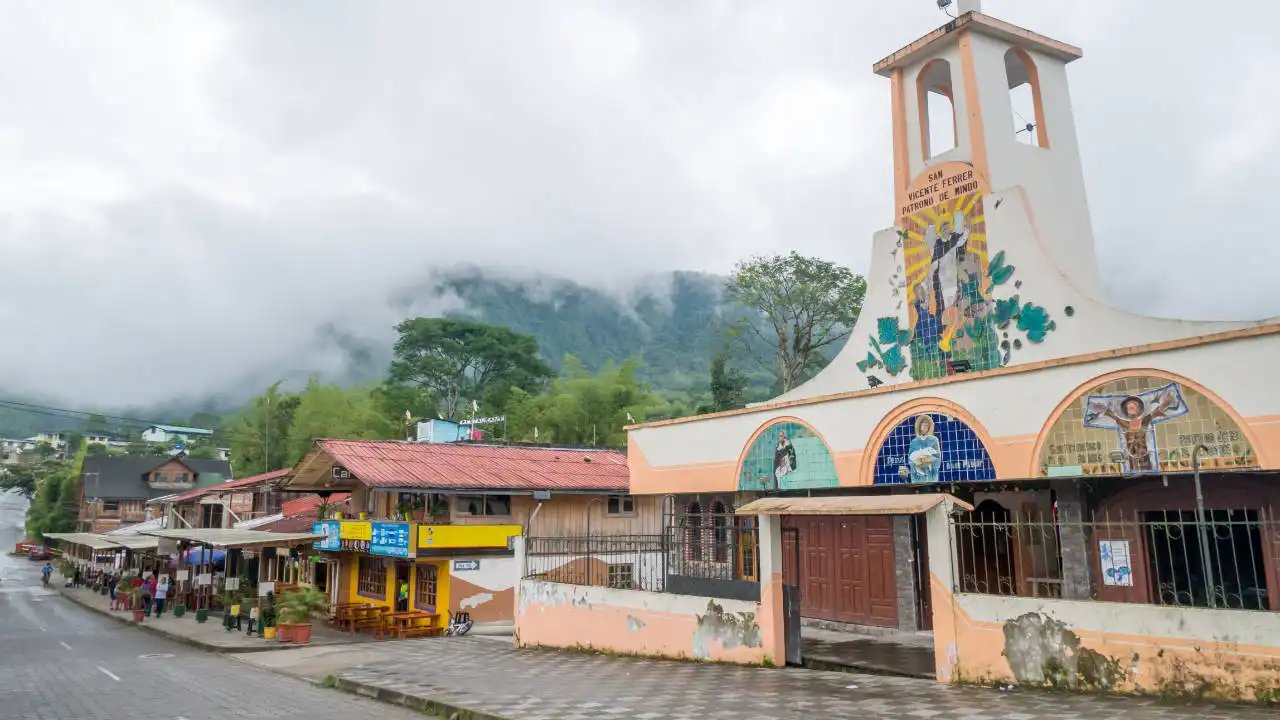El Paíño o Petrel de las tormentas, se trata de una pequeña ave marina que es muy abundante en el atlántico y peculiarmente rara, ya que se mantiene fuera de las costas, solo a veces se puede visualizar desde la tierra.
Su nombre “Paíño” es denominado asi porque da referencia a dos subfamilias de aves de las cuales son descendientes de distintas especies entre sí y es relativamente más grande que un gorrión, y su sobrevuelo se le asemeja al aleteo de una mariposa.
Su plumaje se asemeja al color del chocolate o marrón oscuro, un plumaje hermoso y elegante, durante su vuelo se hace visible en la base de su cola una franja ancha.
Características de El Paíño o Petrel de las tormentas
- Puede llegar a medir de entre 13 a 26 centímetros.
- Su peso varía dependiendo de la especie.
- Su dieta se basa en moluscos, crustáceos y pequeños peces.
- En cuanto a su apariencia suelen ser de cráneo alargado, cola cuadrada, con alas y patas cortas.
- Respecto a su color poseen un oscuro dorso y algunas partes blancas inferiores.
- Tienen una bifurcada cola con patas cortas y alas relativamente más largas.
- Pertenecen a la familia Hydrobatinae, por ejemplo, el Paíño que tiene bifurcada su cola es gris totalmente, mientras que el Paíño de Honry poseen un color blanco descrito en marcas en las partes inferiores y su cara.
¿De qué se alimentan los Paiños?
Estas aves suelen revolotear al nivel del agua con la intención de poder capturar peces pequeños y crustáceos, que suelen estar por debajo de la superficie. Pocas veces se les ve haciendo su tarea de buceo, pero no suelen elegir esta opción recurrentemente.
Muchas veces las focas y ballenas les facilitan la tarea para el paìño poder pescar, ya que suelen aprovechar los peces que dichos animales marino arrastran cuando llegan a la superficie.
¿Cómo se aparean algunos paìños?
Estas aves año tras año regresan a la misma colonia reproductiva, donde sus nidos se ubican en grietas o huecos de las rocas. La mayoría de las especies de paìños pueden tener actividad en la noche, con la ventaja de que sus predadores no los ubiquen fácilmente. La única especie que no tiene hábitos nocturnos es la especie de Paíño de Galápagos.
Por otra parte, las aves adultas se les consideran monógamas y cada temporada vuelven a reencontrasen. Tienen la particularidad de que ponen un solo huevo en la cual ambos padres se reparten la tarea de incubar por un periodo de 50 días al huevo. Cada uno pueden incubar su huevo de acuerdo a 6 días cada uno, para luego continuar por alrededor de 70 días un periodo de crianza.
No obstante, las ratas y gatos salvajes pueden llegar a casar los huevos y pichones de estas aves.
¿Cuántos años vive el paìño o petrel de las tormentas?
Estas sorprendentes aves pueden llegar a vivir hasta 30 años.
Otros datos curiosos de El Paíño
Esta ave se le considera por tener un enorme sentido de pertenencia al lugar donde nacen acudiendo cada año al mismo lugar de anidamiento. Por otro lado, son las aves del mar más pequeñas del mundo.
Como si se tratase del propio discípulo de Jesús, Pedro, el peltre lo alude caminando sobre las aguas y todo se debe a sus débiles patas pues solo soportan en tierra su propio peso y caminan algunos pasos.
Se les dicen Petrel de las tormentas, debido a que los marineros los llaman “Pichones de la Madre Cara”, en latín este nombre es referente a la Virgen María. De hecho, muchos se refieren a estas aves como mensajeras divinas, ya que advertían cuando se avecinaban las tormentas.
El 90% de estas aves marinas poseen en su interior plástico
No obstante, son los mismos seres humanos quienes han venido acabando con muchas especies marinas. Donde de acuerdo con un estudio de Birdlife Internacional, una organización conservacionista, el 90% de estas aves marinas poseen en su interior plástico.
Para culminar, el petrel suele ser muy frecuente en el mar Mediterráneo y pasan la mayor parte de su extensa vida volando sobre el mar. El cuidado de las aves marinas, como los paiños o petreles de las tormentas, es crucial para mantener el equilibrio de los ecosistemas marinos. Estas aves desempeñan un papel fundamental en la cadena alimentaria y en la salud de los océanos al controlar poblaciones de peces y contribuir al ciclo de nutrientes.
La conciencia sobre la conservación de estas especies debe ser una prioridad, ya que enfrentan múltiples amenazas, como la contaminación marina, la pesca incidental, la pérdida de hábitat y el cambio climático. Es esencial tomar medidas para proteger sus áreas de reproducción y alimentación, reducir la basura plástica en los océanos y promover prácticas pesqueras sostenibles.
Cada acción individual cuenta: desde reducir el uso de plásticos de un solo uso hasta apoyar iniciativas de conservación y educación. Al aumentar la conciencia y tomar medidas responsables, podemos contribuir significativamente a la preservación de estas aves marinas y, en última instancia, a la salud de nuestros ecosistemas oceánicos para las generaciones futuras.
FAQs
¿Cuál es la peculiaridad del Petrel de las Tormentas en relación con su avistamiento desde la tierra?
El Petrel de las Tormentas es peculiarmente raro ya que se mantiene fuera de las costas y solo a veces se puede visualizar desde la tierra.
¿Cómo es el plumaje del Petrel de las Tormentas y qué característica distintiva tiene durante el vuelo?
Su plumaje se asemeja al color del chocolate o marrón oscuro, y durante el vuelo se hace visible en la base de su cola una franja ancha.
¿Cuál es el tamaño aproximado del Petrel de las Tormentas y cuál es su dieta?
Puede llegar a medir de entre 13 a 26 centímetros. Su dieta se basa en moluscos, crustáceos y pequeños peces.
¿Cómo es el proceso de apareamiento y reproducción de los Petreles de las Tormentas?
Regresan año tras año a la misma colonia reproductiva, donde sus nidos se ubican en grietas o huecos de las rocas. Pon un solo huevo que ambos padres se reparten la tarea de incubar por un periodo de 50 días. Cada uno puede incubar su huevo por 6 días, para luego continuar por alrededor de 70 días con el periodo de crianza.
¿Cuál es la esperanza de vida del Petrel de las Tormentas y cuál es su sentido de pertenencia especial?
Pueden llegar a vivir hasta 30 años y tienen un enorme sentido de pertenencia al lugar donde nacen, acudiendo cada año al mismo lugar de anidamiento.
¿Por qué se les llama Petrel de las Tormentas y qué relación tienen con la conservación marina?
Los marineros los llaman “Pichones de la Madre Cara”, en referencia a la Virgen María, ya que se creía que estas aves advertían cuando se avecinaban las tormentas. Son fundamentales para mantener el equilibrio de los ecosistemas marinos, controlando poblaciones de peces y contribuyendo al ciclo de nutrientes.
¿Cuál es una de las principales amenazas para el Petrel de las Tormentas y otras aves marinas?
La contaminación marina, especialmente por plásticos, es una de las principales amenazas. Según un estudio de Birdlife Internacional, el 90% de estas aves marinas poseen en su interior plástico.
¿Qué medidas se pueden tomar para proteger al Petrel de las Tormentas y otras aves marinas?
Es esencial tomar medidas para proteger sus áreas de reproducción y alimentación, reducir la basura plástica en los océanos y promover prácticas pesqueras sostenibles. Cada acción individual cuenta, desde reducir el uso de plásticos de un solo uso hasta apoyar iniciativas de conservación y educación.




